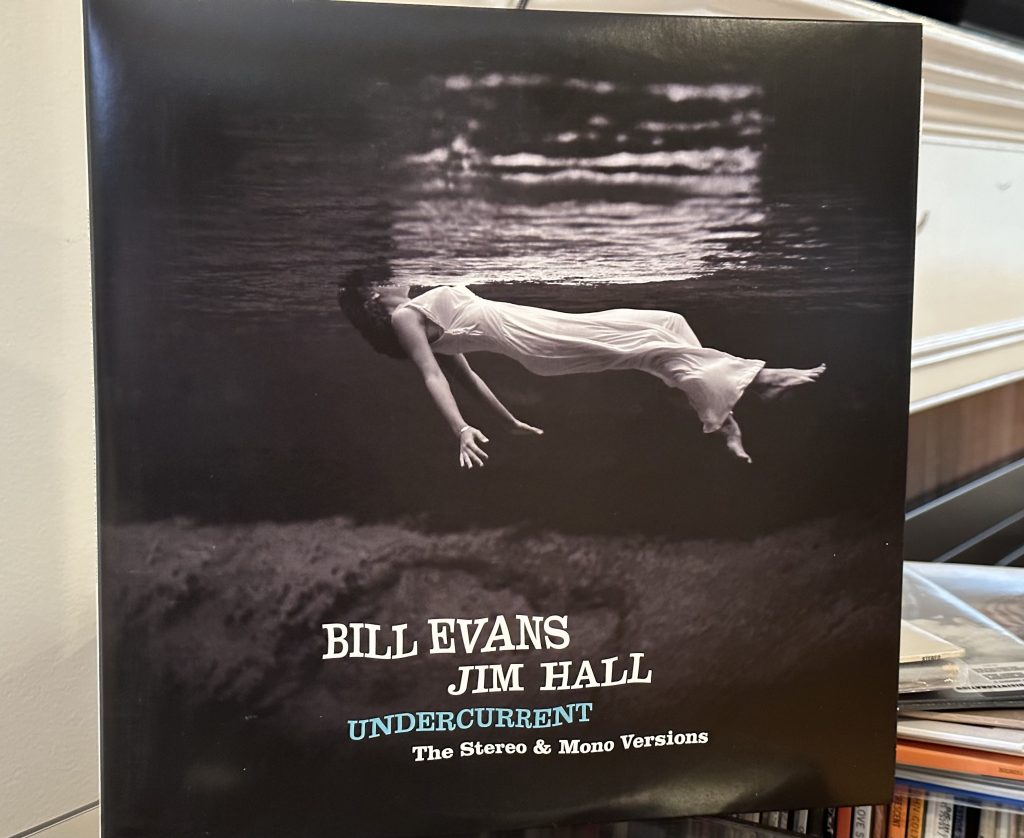
Album of the Week, January 14, 2023
In April 1962, Bill Evans was still digging out from under the emotional burden of Scott LaFaro’s death, but at least he was recording. After Orrin Keepnews persuaded him to return to the studio with Herbie Mann in late 1961, he was intermittently in and out of the studio in various contexts — a brief session with the new trio that wouldn’t see the light of day until 2007, a recording with Todd Dameron’s orchestra, a solo session. And on April 24, he entered the Sound Makers Studio in New York City to record with a new collaborator, guitarist Jim Hall.
Hall had built a reputation in the late 1950s in the Jimmy Giuffre Trio, and went on to collaborate with a number of musicians in the following years, including Dave Brubeck’s long-time collaborator Paul Desmond, and Sonny Rollins (that’s Hall on Rollins’ The Bridge). Along the way he had appeared opposite Evans when the latter was in Tony Scott’s quartet, and with the Giuffre Trio opposite Evans in Miles’ band in a run of dates at Café Bohemia in 1958. (Hall recalls, “Miles would tease that our silly little trio would get more applause than his group.”)
The two men got together to toss around some ideas in Evans’ New York apartment, and then headed into the studio, recording the album on April 24 and May 14, bracketing the final recording session for Nirvana with Herbie Mann and the Evans trio. What happened in the studio is an example of jazz alchemy. The two players throughout listen to each other intently, trading melodic ideas and completing each others’ harmonic sentences.
The version of “My Funny Valentine” that opens the album shows off the duo’s musical imagination. Far removed from the meditative flavor of Miles’ various interpretations of the tune, the two take the tune at a breakneck speed that shows off the interplay between the two. In the first chorus, Evans takes the lead, but Hall’s accompaniment anticipates the chord changes up the scale, practically pulling Evans up after him! After the first chorus, things start to breathe a little more, with both Evans and Hall leaving rests in their solos between ideas, as though punctuating a conversation.
The second track, “I Hear a Rhapsody,” likewise flips around the convention established by John Coltrane and others who had covered this unlikely jazz standard. Where Coltrane’s recording takes a brisk pace, Hall and Evans meditate on the tune, with Hall’s guitar setting the pace via an out of tempo introduction that settles into a 60bpm reverie. Again, Evans and Hall exchange ideas in a way that seems psychic.
“Dream Gypsy” continues the trance, this time in a waltz. There is more than a hint of “Blue in Green” in the introduction, but rather than heading into modal bliss, this first performance of the lovely Judith Veevers tune settles into a dark mode with flavors of Spanish guitar.
The opening of the second side, Jim Hall’s “Romain” sounds as though it should be “Ev’ry Time We Say Goodbye” before it turns a corner, and changes key. There’s still a tinge of the Cole Porter number in the song, but the melody circles around G minor, as though reluctant to leave, before returning to C major, not quite performing the “major to minor” transition from the earlier song. It’s bewitching, and the duo keeps the tempo moving so that the end effect is bluesy rather than lugubrious.
John Lewis’ “Skating in Central Park” likewise has a touch of the familiar about it, but the genial waltz sweeps you along too ingratiatingly to worry about where you might have heard a bit of it before, circling the proverbial pond until it reaches a final climactic chord.
“Darn That Dream” continues in much the same key as “Central Park,” but freely, with a short introduction by Evans yielding to an unaccompanied solo by Hall. The performance has the feel of the best of Bill Evans, that quiet moment where the chords give way into a moment of transfiguration. He was to find that transcendent quality in the next recording project he did, which would see him return to the studio with his new trio; we’ll hear from them next week.
A note on the cover: that’s a photograph from a 1947 Harper’s Bazaar shoot by fashion photographer Toni Frissell at Weeki Wachee Springs in Florida. The tourist attraction, known for its live “mermaids,” is still in operation today.
You can listen to the album here:
